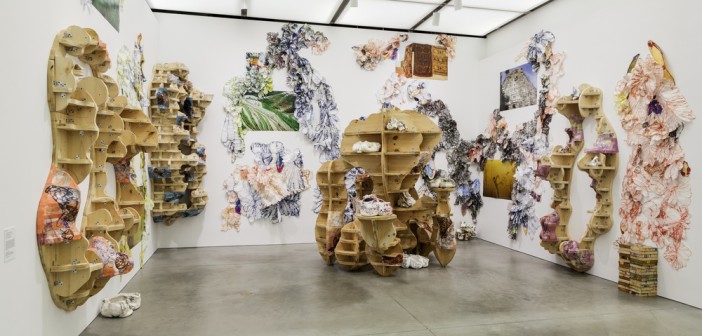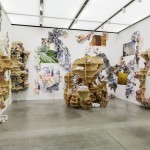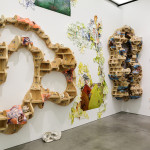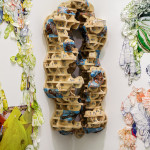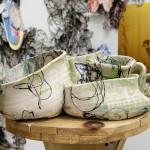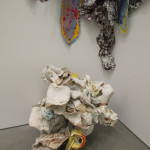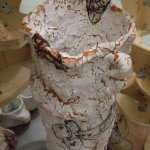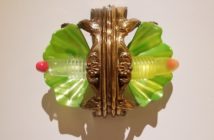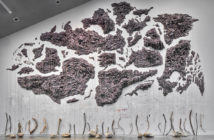It is curious that Mark Cooper's work, which is the most visually and spatially boisterous, the most materially lustful (though not the most fetishistic) of the four finalists', is that which directly references Buddhist cultures, concepts and practices of meditation, contemplation, immateriality and emptiness. The jovial mess named yu yu tangerine isn't the cast-off of a frenzied unburdening. It is the offspring of a creative process that harnesses visual language from a multiplicity of sources, pulling a commotion of color, line, shape, texture, form into a single space, and leaving it there like some gargantuan feast for our eyes. It feels compulsive and libidinous—devoid of restraint.
Cooper's exuberant installation More is More colonized Samsøn in 2011 with greater elegance and aplomb than yu yu tangerine. Given that the assembled parts and the context of both presentations are roughly similar, one wonders what lacks in this iteration of the installation. The answer might be: more. Something closer to a cave, a womb, or a fortress of solitude—an accumulation of obstacles that forces the body into a particular navigation of space. But the answer could just as easily be: less. The argument for this approach would be that the individual parts that make up yu yu tangerine are, by and large, stronger than the whole. Because of a lack of visual hierarchy (resulting primarily from a similarity in scale and shape) no part can claim precedence, and therefore each appears to be a translation of the same concept through a succession different materials and forms: a photograph of a hillside paddy equals line drawings on rice paper equals the tiered, meandering sculptures.
The most satisfying moments of my visit through the installation came in the discovery of individual objects, principally Cooper's ceramics. Sometimes these function as outgrowths of the wooden forms, placed on appendages that elevate them toward us. At others they nestle within the hives, or stand alone on the floor. The ceramics feel more self-contained and possess both the colorful airiness of the rice paper drawings and the heft of the wooden structures.
The most confounding elements, on the other hand, were the photographs from the artist's travels in Asia, which draw sharp rectangles in an installation of otherwise fluid lines, and imbue the work with a literalism it wasn't burdened with up to that point. In his interview with the show's curator, Helen Molesworth, Cooper states he took over 8000 pictures while traveling, a passing statement which speaks to the overall challenge evident in this show—Cooper has a hard time editing himself.
_____________
Every two years the ICA holds the James and Audrey Foster Prize by creating a short list of Boston artists of "exceptional promise" and establishing a panel of professionals to assess those artists. All four of the short-listed artists exhibit at the ICA, and one is announced as the James and Audrey Foster Prize winner.
This year’s short list is Sarah Bapst, Katarina Burin, Mark Cooper, and Luther Price.
This year’s jury is Mark Dion, artist; Paul Ha, director of MIT List Visual Arts Center, Cambridge, MA; and Ali Subotnick, curator at the Hammer Museum, Los Angeles, CA.
This week we will be running reviews for all the artists on display. They will be in alphabetical order.
We here at Big Red & Shiny congratulate Katarina Burin for winning this year’s James and Audrey Foster Prize.
- Mark Cooper, yu yu tangerine, 2013. Wood, aluminum brackets, screws, ceramics, fiberglass, silkscreen on muslin, acrylic, watercolor, marker, rice paper monoprints, digital photographs. Dimensions variable. Courtesy the artist. Photo: John Kennard.
- Installation shots of yu yu tangerine at the ICA
- Installation shots of yu yu tangerine at the ICA
- Installation shots of yu yu tangerine at the ICA
- Installation shots of yu yu tangerine at the ICA Photo: Stephanie Cardon
- Installation shots of yu yu tangerine at the ICA Photo: Stephanie Cardon

